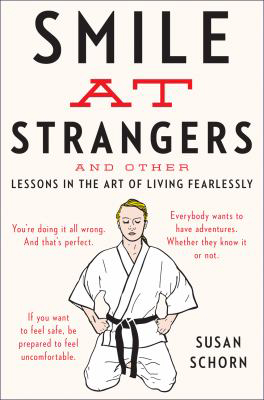One of the best things about getting older is that I have less anxiety about things I cannot control. This does not mean that I live fearlessly; on the contrary, I still have plenty of things that keep me awake at night. But little things bother me less, and bigger things, well, I’m working on those.
Reading this week’s book, “Smile at Strangers,” has allowed me to gain much-needed perspective on how fear and anxiety can restrict one’s ability to cope with life’s challenges. The author, who holds a black belt in karate and is on her way to becoming a self-defense instructor, shares her life experiences in and out of the “dojo” — a Japanese term for a training hall — to show how the practice and philosophy of martial arts has helped her accept and better control her fears.
While not everyone needs or even wants to earn a black belt in order to fully appreciate the art of living fearlessly, a martial arts mentality offers much to ease anxious minds. And when I say a “martial arts mentality,” I don’t want readers to think that Susan Schorn’s book is all about kicks and karate chops. Physical steadfastness certainly contributes to confidence and fortitude, but putting into practice words of wisdom learned through Schorn’s karate training can lead to some powerful results. Each chapter of “Smile at Strangers” is titled with zen-like, sometimes humorous expressions: “Fall down seven times, get up eight,” “See yourself clearly, and you won’t dread the scrutiny of others,” “Remain centered, no matter how many building permits you have to obtain.” These clever, wise chapter headings hint at the story soon to unfold: Schorn’s quest to quell the inner demons every one of us experiences in one form or another.
With wit and a large helping of humility, Schorn describes her personal journey as a fearful yet ultimately empowered human being. As she explains early on, fear can result from truly terrifying events such as the murder of her childhood friend’s mother; or, it can seem to come out of left field, like Schorn’s inability to cope with a move to Hawaii (or, as she puts it, paradise). In other words, reasons for fear are as varied and unique as people. Learning how to keep fear from consuming your life — through techniques such as meditation, or, in Schorn’s case, a combination of contemplative and physical approaches — is key. As a wise man once said, “Do not go with fear, Grasshopper; fear is eternal darkness.”
Jan Johnston is the Collection Development Coordinator for the Fort Vancouver Regional Library District. Email her at readingforfun@fvrl.org.



